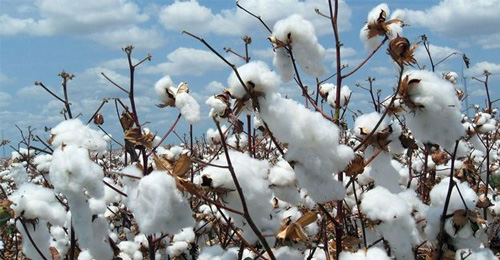Islamabad
Cotton crop sowing in the country during current season (2020-21) decreased by 1.3 percent as compared the sowing of the corresponding period of last year.
Cotton, which is among the major cash crop of the country and main sources of industrial raw material of largest export sector of national economy was on downwards trajectory due to various issues, said Cotton Commissioner in the Ministry of National Food Security and Research Dr Khalid Abdullah.
Talking to APP here on Tuesday, he said that cotton crop had cultivated over 2.457 million hectares as against the set targets of 2.663 million hectares, which was less than 1.3 percent of targets fixed for this season.
He said that about 92 percent targets of cotton cultivation was achieved during current season, adding that crop was grown over 2.489 million hectares during same period of last year.
In Punjab, he said that area under cotton growing was decreased by 2.5 percent as crop had sown over 1.890 million hectares as compared the target of 2.03 million hectares.
However, he said that the cotton sowing in Sindh registered about 2.7 percent increase as it cultivated over 0.615 million hectares as against last year’s 0.599 million hectares.
The Commissioner said that declining trend in cotton growing area was mainly attributed to increase in covered area under competing crops including sugarcane, maize and rice.
“Due to the low input cost and less investment in competing crops, besides decreasing pricing trends of cotton in international markets, the farmers preferred the cultivation of these crops and they shifted their land into other crops,” he remarked.
The second main reason in decreasing area under cotton crop was late harvesting of wheat, he said adding that
cotton was largely growing in wheat production areas and late wheat harvesting resulted in decline in cotton growing area.
The third and main reason, he said was the absence of cotton support price announcement by the government in the country, which discouraged the cotton growers.
Due to declining trend in cotton prices in international markets, the farmers were expecting government intervention to protect their interests, he said adding that absence of support price mechanism also discouraged the local farmers to cultivate the crop and encouraged them to shift no other crop with better returns.
Dr Abdullah further informed that during current Kharif season, sugarcane sowing witnessed about 16 percent increase as compared the same period of last year.
Meanwhile, the sowing of other competing crops like maize and rice had also witnessed significant growth, he said adding that country was already surplus in production of these crops.
In order to cope with the prevailing situation and encouraging the farmers to grow more cotton, he said government had evolved a scheme of incentives that would reduce the input cost of cotton, besides reducing the cost of doing business.
He said that government had announced subsidies on fertilizers and pesticides in its agricultural emergency program and farmers would be provided fertilizers and pesticides on controlled rates.
Besides, to ensure availability of cheaper agriculture credit, the government had also announced to pay 10 percent markup on agriculture loans for growers, adding that interest rate on agriculture lending was charged at the rate of 16 percent.—APP










